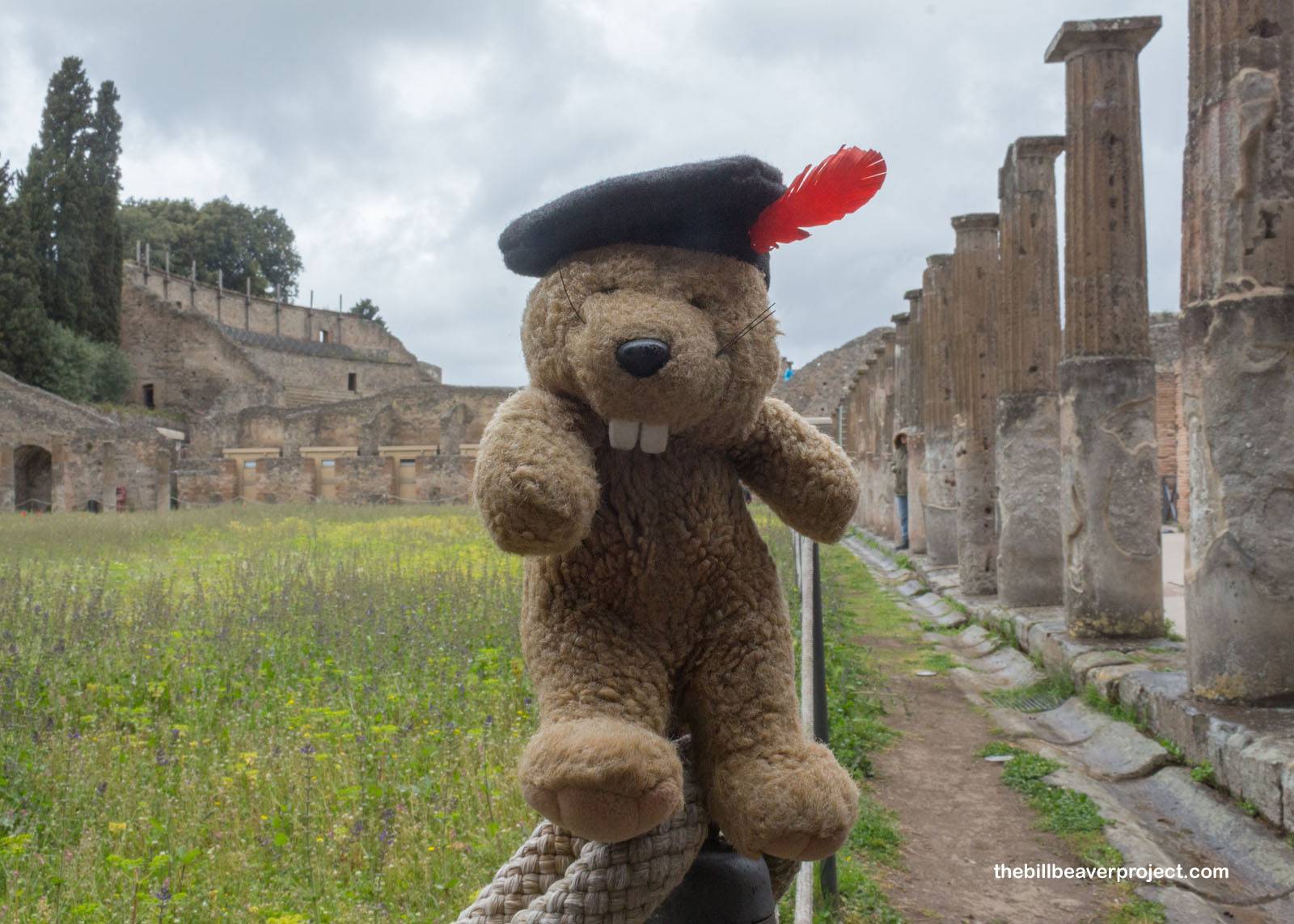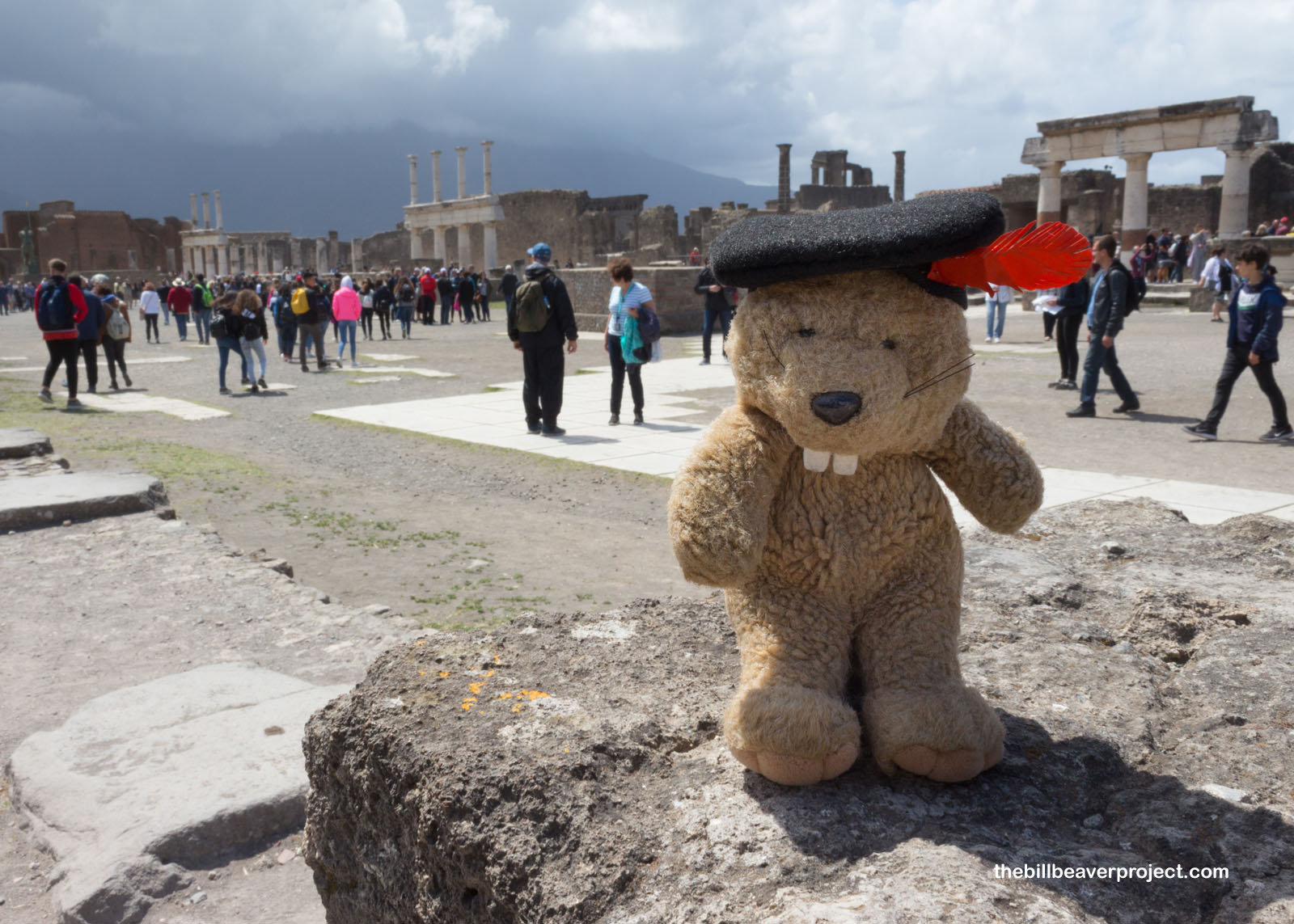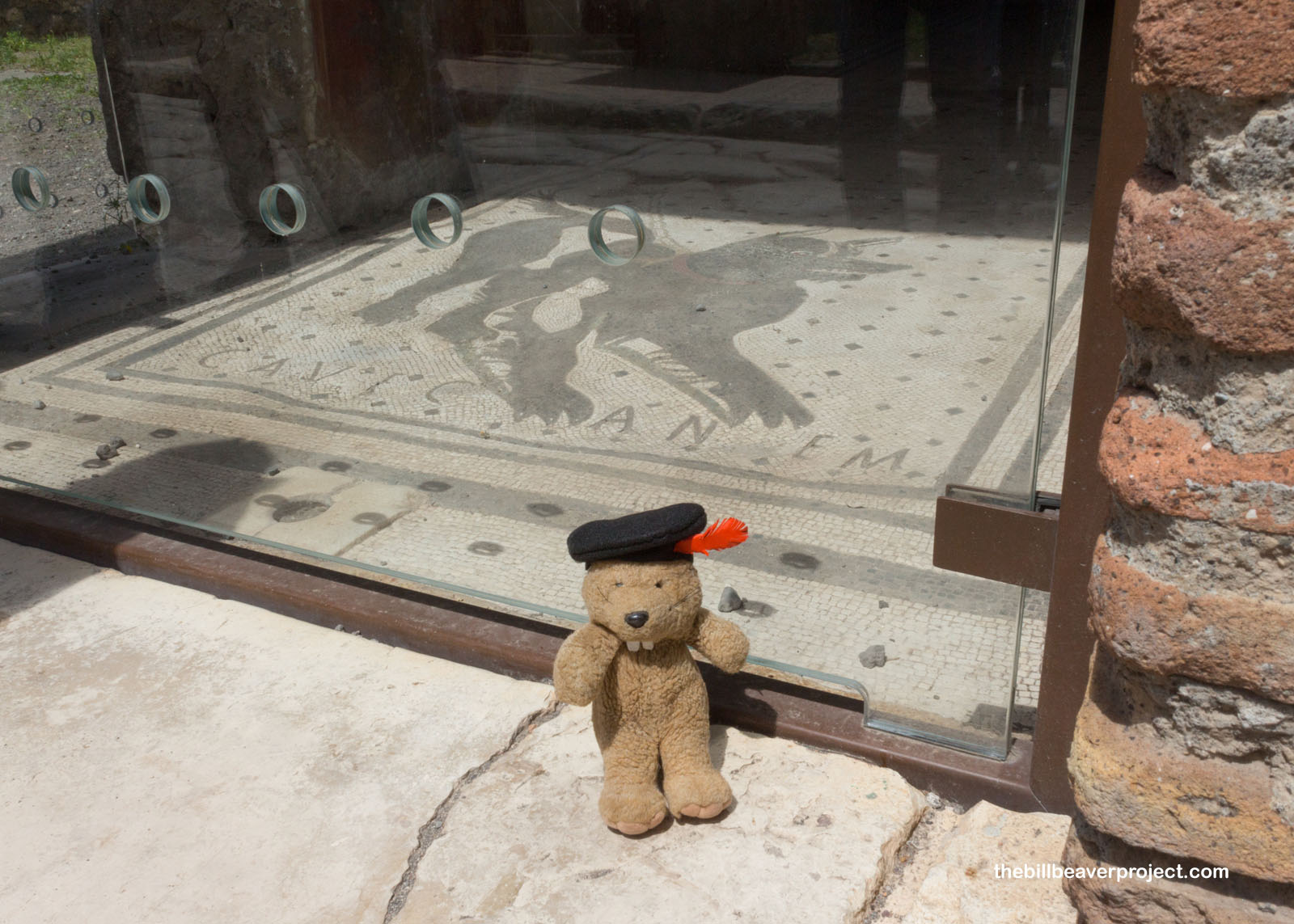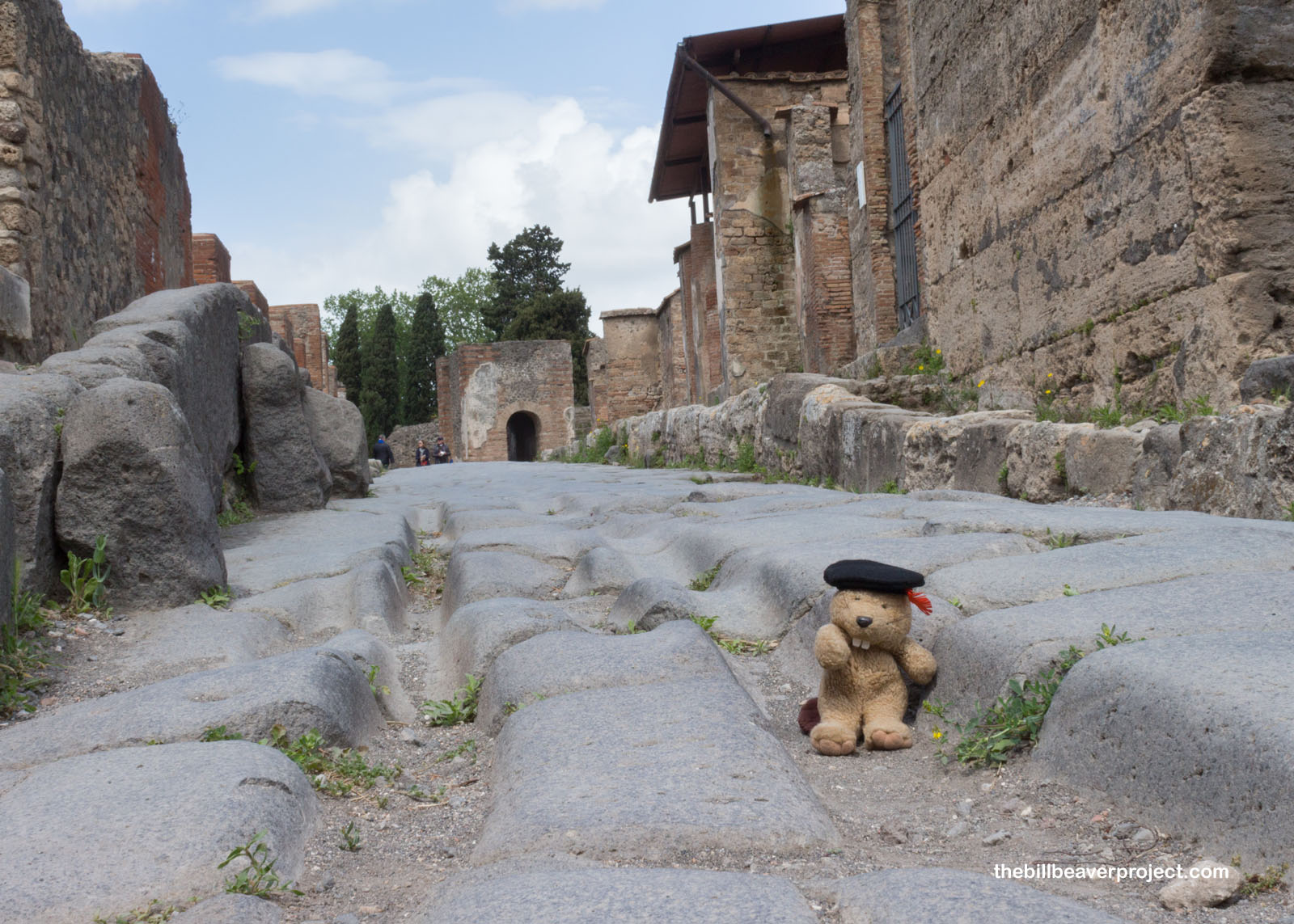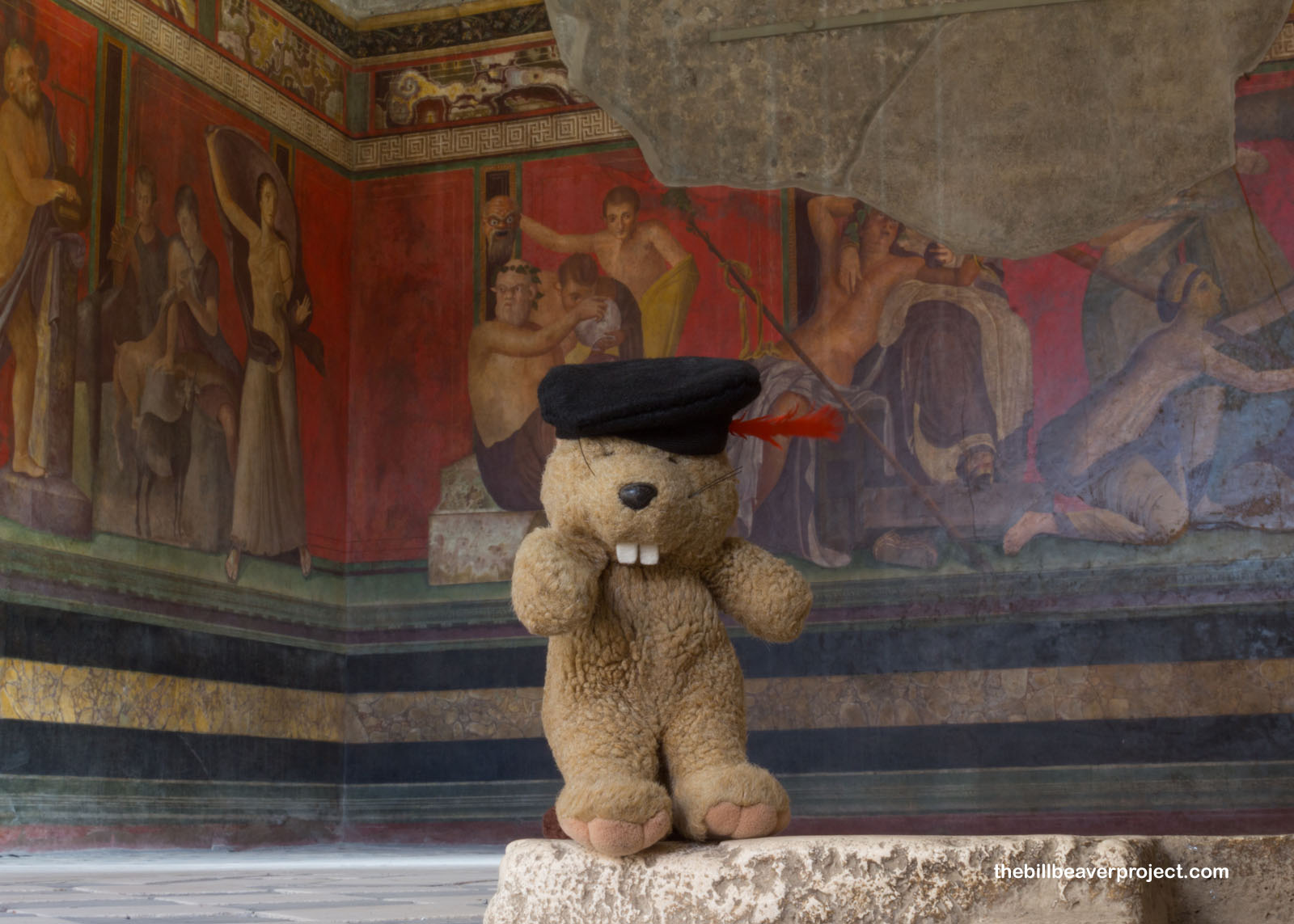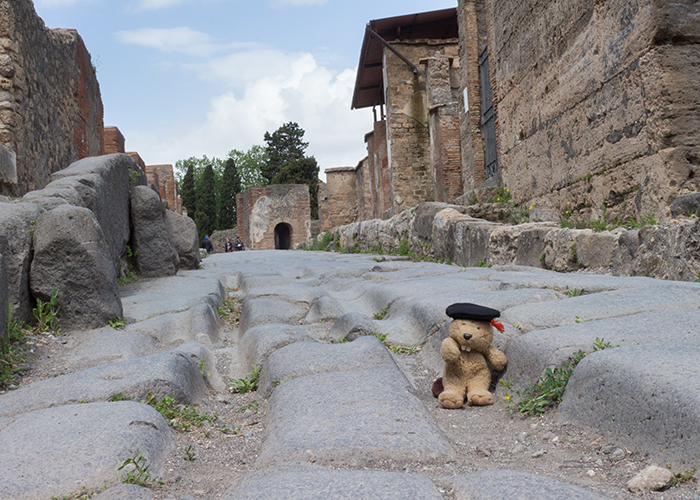| What makes it historical? |
Pompeii was originally settled during the Bronze Age by the Oscans of Campania, whose word for five, pompe may have been the first name of five villages that merged into one. This seaside city would go on to change hands many times, first to the Greeks in the 8th century BC! Their influence is reflected in legends of Hercules fighting fire giants in nearby Herculaneum, his victory commemorated in a procession called pumpe!
The Greeks fell to the Etruscans, who were conquered by the Samnites, who then fell to Rome around 89 BC. It’s this Roman stage that is memorialized at Pompeii today! At its height, there were 10-12,000 people living in this important trade port on the Bay of Naples. This made many of the people in Pompeii very wealthy, and in fact, under Rome, Pompeii became a tourist destination. Even Nero may have had a villa nearby!
All of that changed around noon on August 24, 79. That’s when nearby Mount Vesuvius erupted, covering Pompeii, Herculaneum, Oplontis, and Stabiae! It happened so quickly that many people were buried and vaporized almost instantly, and the piles of volcanic ash covered the cities so thoroughly that they were very well preserved for centuries!
Rediscovered in 1748, haphazard excavations got underway and remained haphazard for about a hundred years! It wasn’t until Giuseppe Fiorelli took over in 1860 that careful uncovery of Pompeii’s mosaics and the eerie plaster casts of the fallen bodies could be drawn from the ashes! Today, Pompeii stands as a monument to both great prosperity and catastrophic loss! |
